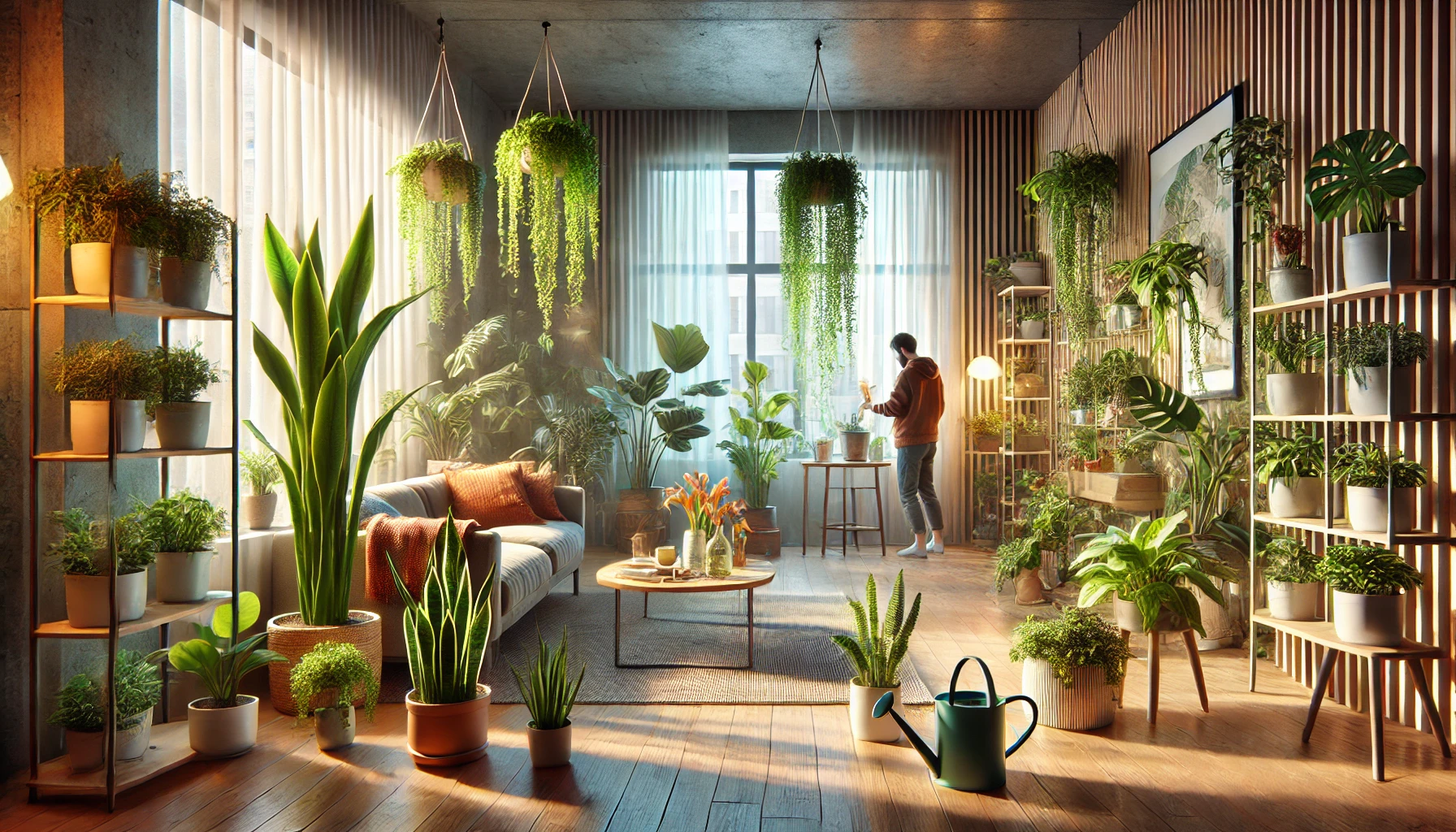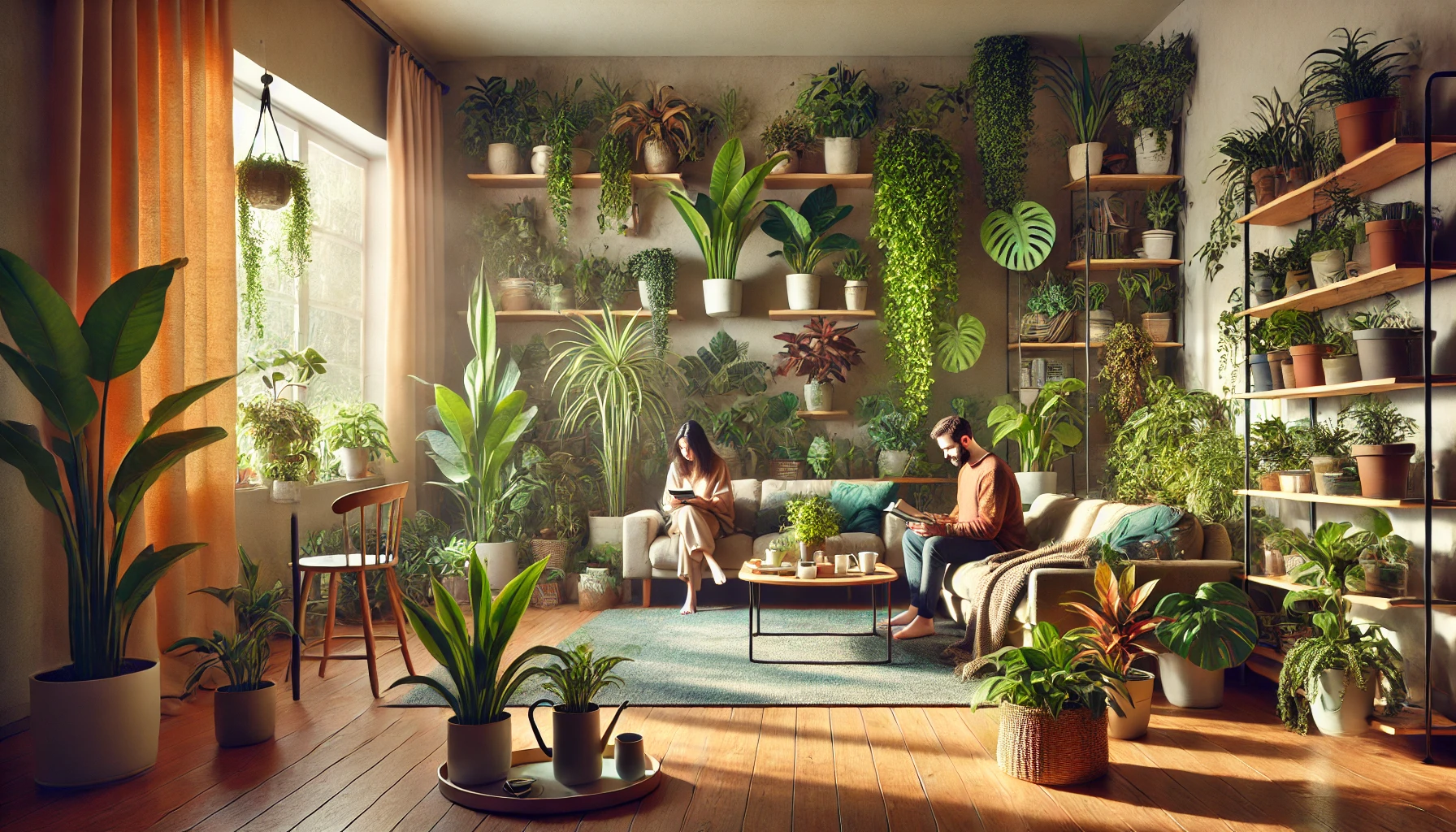Houseplants bring life, vibrancy, and a touch of nature into our homes. But what if your living space doesn’t receive much natural light? Don’t worry—plenty of houseplants thrive in low-light environments, making it possible for even the darkest corners to flourish with greenery.
Whether you live in a city apartment with limited windows or want to brighten a dimly lit bedroom, incorporating these plants is an easy way to boost your home’s atmosphere.
Before we dive into which houseplants do best in low light, it’s important to understand how natural light affects plant health. While sunlight is essential for photosynthesis, certain plants have adapted to survive and even thrive with minimal light.
These low-maintenance houseplants not only elevate your decor but also improve air quality and reduce stress.
Houseplants Thriving in Low-Light Conditions
Some plants are naturally built to withstand low-light conditions, thanks to their adaptability in nature. Let’s explore some of the best options for dimly lit spaces:
1. Snake Plant (Sansevieria)
- Nicknamed the “Mother-in-Law’s Tongue,” this plant is incredibly resilient.
- It thrives in low light and only requires occasional watering.
- Benefits: Filters toxins from the air, improving indoor air quality.
2. ZZ Plant (Zamioculcas zamiifolia)
- Known for its waxy, dark green leaves, the ZZ plant is almost indestructible.
- It can survive with very little light and minimal watering.
- Benefits: Low maintenance and great for offices or bedrooms.
3. Pothos (Epipremnum aureum)
- Often called “Devil’s Ivy,” Pothos is a trailing vine that thrives in low light.
- Its heart-shaped leaves are perfect for hanging baskets or shelves.
- Benefits: Removes indoor air pollutants like formaldehyde and benzene.
4. Cast Iron Plant (Aspidistra elatior)
- This plant earns its name for its durability and ability to tolerate neglect.
- It’s perfect for low-light rooms and requires little watering.
- Benefits: Ideal for beginners or busy plant owners.
5. Peace Lily (Spathiphyllum)
- With its glossy leaves and beautiful white flowers, the Peace Lily is a favorite for low-light areas.
- It thrives in indirect light and needs watering once a week.
- Benefits: Known for its air-purifying qualities.
Characteristics of Low-Light Plants
These plants share common traits that make them perfect for darker spaces. Thick, broad leaves help them absorb as much light as possible, while their slow growth rate ensures they can survive longer periods without direct sunlight.
Benefits of Low-Light Houseplants
- Improved Air Quality: Many low-light plants filter toxins and purify the air.
- Reduced Stress: Greenery in your home promotes relaxation and reduces anxiety.
- Boosted Productivity: Studies show that houseplants can improve focus and productivity.
- Aesthetic Appeal: They add a natural, fresh touch to your decor without needing constant care.
Exploring the Suitability of Bedroom Plants
Is It Okay to Sleep with Plants in Your Bedroom?
A common myth suggests that having plants in your bedroom is unhealthy because they release carbon dioxide at night. While it’s true that most plants switch from oxygen production to carbon dioxide release after dark, the amount is so minimal that it poses no risk to humans. In fact, having houseplants in your bedroom can be beneficial.
Benefits of Bedroom Houseplants
- Air Purification: Plants like the Peace Lily and Snake Plant remove toxins from the air, creating a cleaner and healthier environment.
- Increased Humidity: Some plants release moisture, helping to maintain optimal humidity levels in your bedroom.
- Better Sleep Quality: The calming presence of plants can promote relaxation and improve sleep.
Best Houseplants for Bedrooms
- Snake Plant: Releases oxygen at night, making it one of the best choices for bedrooms.
- Aloe Vera: Known for its air-purifying abilities and soothing presence.
- Lavender: While technically an herb, lavender is a great bedroom addition due to its calming aroma.
- Areca Palm: Helps maintain humidity levels and adds a tropical touch.
Leveraging Grow Lights for Houseplants: The Ultimate Guide for Thriving Indoor Gardens
Indoor gardening is a wonderful way to bring nature into your home, but one of the biggest challenges is ensuring your plants receive adequate light—especially in low-light environments. This is where grow lights can make a world of difference. Whether you live in a basement apartment or just want to brighten up a shady corner, using grow lights can help your houseplants thrive all year round.
The Role of Grow Lights in Indoor Gardening
Grow lights mimic natural sunlight and provide plants with the light spectrum they need for photosynthesis.
Natural light can be limited indoors, especially in homes with few windows or during the darker winter months. Grow lights fill this gap, ensuring that even the most light-hungry plants can flourish.
For low-light environments, grow lights are a game-changer. They allow you to grow a wider range of plants than would otherwise be possible in dark or shaded spaces.
With the right type of grow light, you can successfully cultivate healthy, vibrant plants without worrying about their placement near windows.

Which Plants Do Best Under Grow Lights?
While most plants benefit from grow lights, some thrive under them more than others. Here’s a list of houseplants that respond particularly well to supplemental light:
- Herbs (Basil, Mint, Parsley): Ideal for kitchen gardens, herbs flourish with consistent light.
- Succulents and Cacti: These light-loving plants thrive under bright grow lights, especially during winter.
- Orchids: Although sensitive to direct sunlight, orchids benefit from indirect grow light exposure.
- Ferns: Most ferns prefer low to medium light and grow well under soft grow light settings.
- Philodendron and Pothos: Perfect for beginners, these low-maintenance plants adapt well to artificial light.
- African Violets: Known for their colorful blooms, these plants need consistent light to flower continuously.
Tips for Selecting and Placing Grow Lights for the Best Results
When choosing grow lights for your indoor garden, keep these key factors in mind:
- Light Spectrum: Full-spectrum LED grow lights are the best choice, as they provide the necessary blue and red wavelengths for photosynthesis.
- Distance and Placement: Keep the light 6–12 inches away from most plants. Adjust the distance based on the plant’s light requirements—closer for high-light plants and farther for shade-loving varieties.
- Duration: Provide 12–16 hours of light per day for optimal growth. Use timers to maintain a consistent light schedule.
- Type of Grow Light: LED grow lights are energy-efficient and produce little heat, making them ideal for indoor use. Avoid incandescent bulbs, as they can overheat and damage plants.
Strategic placement of grow lights can transform dark corners into lush green spaces. Experiment with different angles and heights to create a natural look while ensuring your plants receive adequate light.
Identifying Houseplants Sensitive to Direct Sunlight
Not all plants thrive under intense light. Some houseplants are highly sensitive to direct sunlight and can develop scorched leaves or dry out quickly. For these plants, it’s essential to create a shaded, comfortable environment.
Houseplants That Don’t Like Direct Sunlight
Here are some popular houseplants that prefer indirect light or shade:
- Peace Lily: Known for its glossy leaves and white blooms, this plant does best in low to medium light.
- Calathea (Prayer Plant): Its striking, colorful foliage thrives in diffused light but can burn under direct sun.
- Snake Plant (Sansevieria): While adaptable, it prefers indirect light to avoid leaf discoloration.
- Cast Iron Plant (Aspidistra): A hardy plant that tolerates low light but will suffer in direct sunlight.
- ZZ Plant (Zamioculcas zamiifolia): Almost indestructible, the ZZ plant prefers indirect light for best growth.
Strategies to Protect Sensitive Plants from Excessive Sunlight
- Filter the Light: Use sheer curtains or blinds to diffuse sunlight coming through windows.
- Move Plants Away from Windows: Place sensitive plants a few feet away from direct sunlight exposure.
- Rotate Plants Regularly: Turn plants weekly to ensure even growth and prevent one side from getting too much light.
- Monitor for Signs of Stress: Look out for scorched leaves, brown tips, or wilting—these are clear indicators of excessive sunlight.
For plants that are sensitive to direct sunlight, maintaining proper moisture levels and using high-quality potting soil can also help reduce stress and keep them healthy.
Conclusion: Transforming Spaces with Thoughtful Plant Choices
Creating a beautiful indoor garden in a low-light environment is not only possible but also incredibly rewarding. By choosing the right houseplants and incorporating grow lights, you can turn any dark corner into a lush, green retreat.
Houseplants can transform your space into a calming, natural sanctuary that improves air quality and boosts your mood. Whether you prefer vibrant tropical foliage or minimalist succulents, experimenting with low-light plants opens up endless possibilities for enhancing your indoor environment.
So, don’t be afraid to get creative. Mix and match plants, try different grow light setups, and watch your indoor jungle come to life. With a little planning and care, you’ll soon have a thriving indoor oasis that brings beauty and tranquility to your home.


Fantastic article on these hardy indoor plants. I love indoor house plants, but have at times struggled with keeping them alive and healthy, leading to a real trial and error with some co-lateral damage! Your post will be super helpful with it’s straightforward style and cut to the chase information on the most suitable plants to be using in low light conditions. Great read and very well set out.
Thank you so much for your kind words! I’m really glad you enjoyed the article and found the tips helpful. Trust me, I’ve had my fair share of trial and error with indoor plants too—some lessons are learned the hard way! Low-light conditions can be tricky, but once you find the right plants, it makes a world of difference. If you ever have questions or want more plant suggestions, feel free to reach out. Happy indoor gardening!